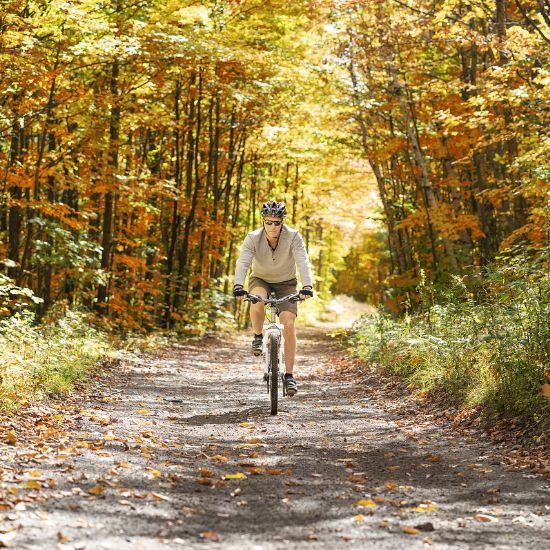
Although autumn is a spectacular time of year to hop on a bike and explore, those stunning foliage views are often accompanied by cooler temps and seasonal uncertainty. Hence, by learning how to choose the right fall cycling gear you can remain comfy and effective no matter what mother nature throws at you. By carefully choosing what to wear for cycling in autumn, you’ll also get the most out of your riding experience.
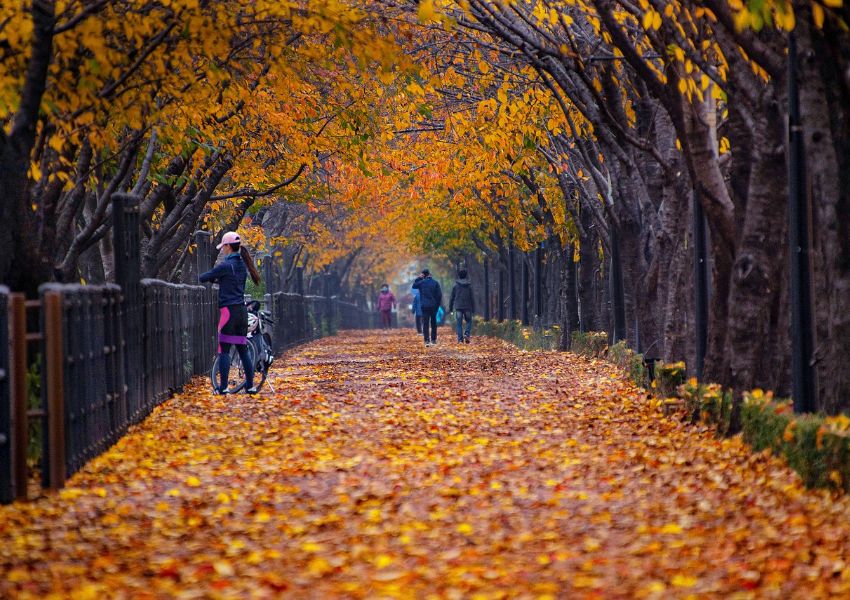
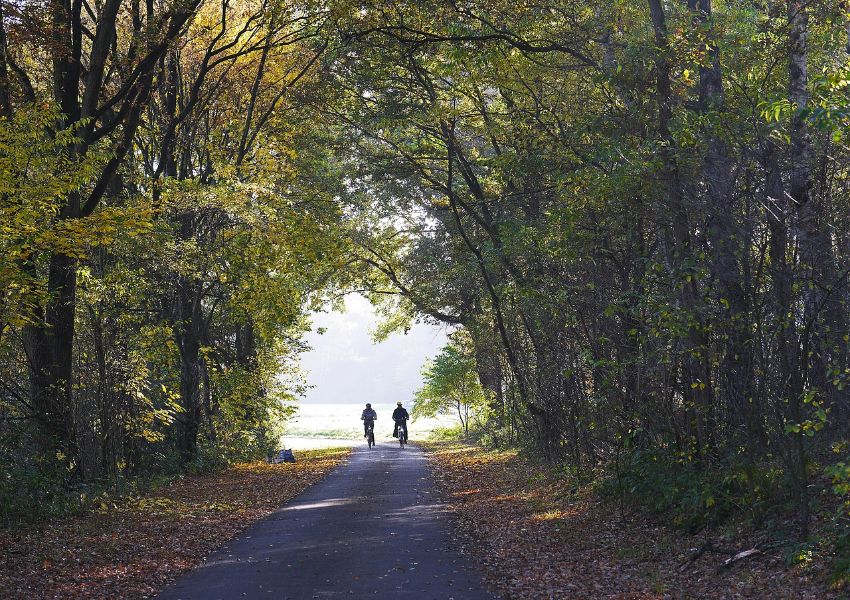
When heading out the door for a fall bike ride, you may be tempted to grab that thick winter jacket to take the edge off a brisk chill in the air. But…what happens when the sun breaks through and warms the air and you begin to boil in your own clothes, sweat uncomfortably dripping down your back? This is where layering comes in handy when choosing your fall weather cycling gear!
By dressing in optimal layers from head to toe, you allow yourself the flexibility of easily adjusting to the everchanging weather patterns. If the ride starts off incredibly cold, you can wear all your layers. If, during the day, the sun breaks through, simply remove unnecessary layers to maintain comfort. In some great autumn cycling destinations such as Crete, where you may go straight from riding along the flat Limassol coast to traversing the mountainside, layering is especially useful.
Just as important as layering when it comes to deciding what to wear for cycling in autumn, is opting for fabrics with max breathability. This means a high moisture-transfer capability to allow sweat to dissipate outwards and leave your skin relatively dry. In turn, you avoid getting cold or overheated.
When shopping around, look for fall cycling gear designed specifically for cycling and constructed from technical, moisture-wicking elastic fabrics. These garments provide excellent, adjustable protection that doesn’t constrict yet rapidly wicks perspiration.
TIP: Avoid cotton as it is ineffective at wicking moisture. Once wet, it stays wet.
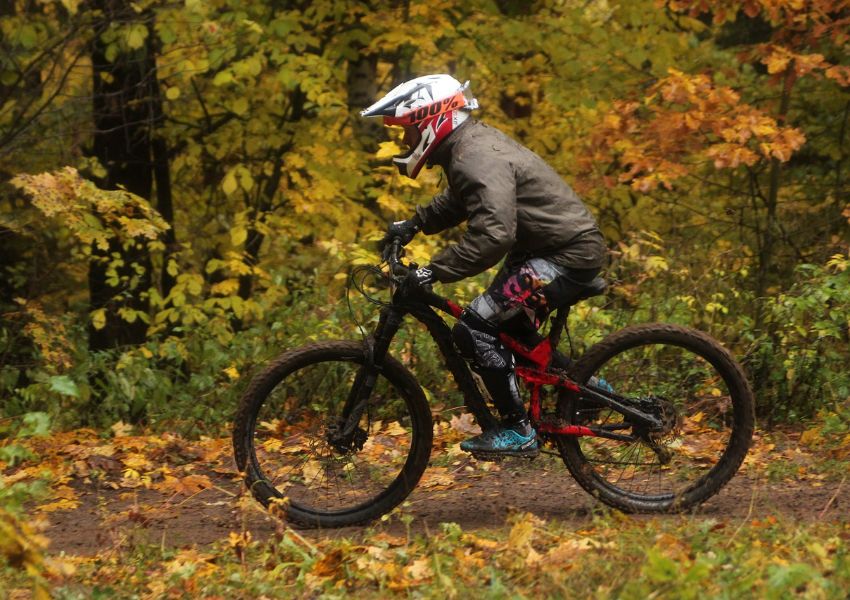
Protecting your core is top priority when choosing what to wear for cycling in autumn. For core coverage, the basic layering system consists of three layers of clothing: the base layer, the mid layer, and the outer layer.
The base layer is worn directly against the skin and helps to regulate your body temperature. It does this by pulling sweat off your skin and wicking it away to keep you dry. It also serves as a thermal layer when temps are low. Depending on the weather and your body physiology, you can opt for a sleeveless base layer, a short-sleeved base layer or a long-sleeved base layer. The best base layers will be soft and close-fitting
The midlayer serves mainly as an insulation to keep your core warm. It also helps to transfer body moisture from your base layer outwards to keep you dry. Depending on the weather, this layer can be a short-sleeved autumn cycling jersey or a long-sleeved jersey. Your choice can also depend on your body physiology. If you tend to run warm or plan for some intense riding or climbing such as through the gorgeous mountains just outside of Barcelona, then you may want to opt for a short-sleeved autumn cycling jersey paired with arm warmers to increase your options. When arm coverage is not needed, for example when your body warms up while ascending the famous Coll de Rates climb in the Calpe area, simply push them down by your wrists. Then when you feel (or expected to feel) chilled such as just before a descent, simply pull them back up into place.
The outer layer is your first line defense against the elements such as chilling wind and rain. This can be a windstopper vest, a lightweight rain jacket or a simple wind jacket. Deciding between these autumn cycling jacket options will come down to the weather expected on the day. If you think that you’ll be “short sleeve jersey” warm, then go for the vest. Or if you can’t decide between the two long-sleeved autumn cycling jacket options, then go for the rain jacket as it can double as a wind jacket. Always choose an autumn cycling jacket with simple designs and no fancy “extras” as these fit more easily into a jersey pocket when not needed.
TIP: When shopping for mid and outer layers, be sure to consider pocket count and size to ensure that all possible unnecessary layers during the ride can be easily stashed away in these pockets. By tightly rolling unused layers – and sticking in waterproof bags like a simple reusable Ziploc to keep dry when rain is expected, you can fit more in the pockets. If you plan to carry more than what pockets can handle, you can also look into “luggage” for the bike such as frame and/or handlebar bags. With extra storage room, you can take more ride snacks as well.

“Is it shorts weather?” This is by far the most commonly asked question when deciding what to wear for cycling in autumn. Well, good thing you don’t have to decide, thanks to knee and leg warmers! These layers give you the option to be prepared for both warm and cold weather cycling. Figuring out how to decide between these two layers, though, is a bit tougher.
Knee warmers are usually best if the weather is expected to be on the warm to slightly cool side. They are also preferable if it is expected to rain as they soak up less water so you are not slowed down by the additional weight. In addition, they take up less room in your jersey pocket.
But if it is very cold or the possible rain is expected to be a chilling one, leg warmers are best. This way the icy water doesn’t directly hit your exposed skin.
Full cycling tights are ideal for when it is expected to be quite cold throughout the whole ride, or you will not have the opportunity to strip down the knee or leg warmers mid-ride. Be sure to get tights that are constructed of thin material, not thermal, to avoid overheating.
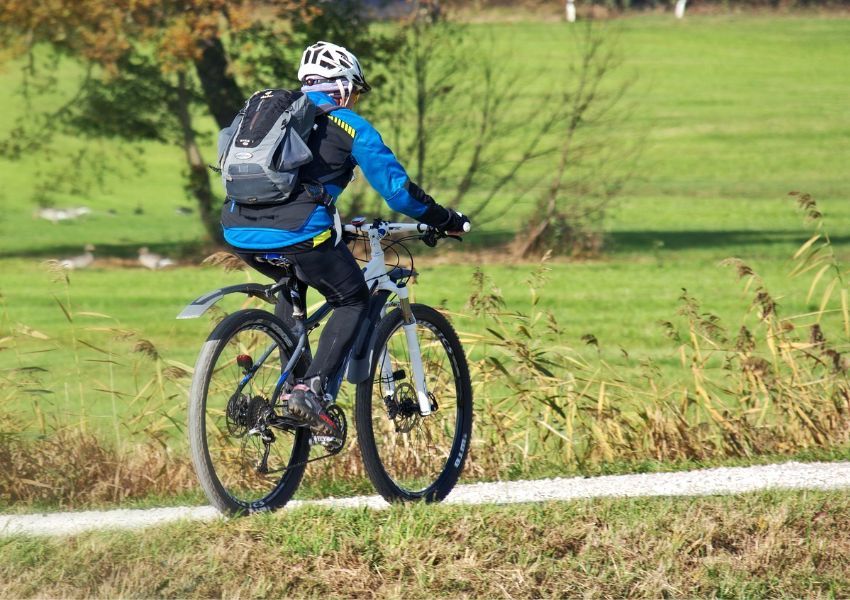
In addition to top and bottom layering, careful consideration should go to your extremities – namely hands, feet and head – since these locations are where we lose most of our body heat.
Keeping your head covered – or uncovered – can make a huge difference in adjusting body heat since most of it is lost through our head.
On days that are just a bit chilly, an ear warmer can expertly do the job. But for anything colder, a cycling cap or beanie is ideal. It can help a lot when leaving for your ride in cold weather. Once your body heats up, it can be easily be stowed away. You can also pair a cycling cap or beanie with ear warmers for the ultimate in versatility.
While keeping your core warm helps to prevent cold fingers and toes, these body parts remain sensitive to the elements. This is especially true if our core temperature drops even a bit which causes our body to restrict blood flow to these extremities. The body will rather lose a finger or a toe than put our vital organs in harm’s way.
Even if the weather isn’t cold enough to actually lose a digit, choosing the right layers on them can strongly influence your comfort while riding by helping to regulate body temperature. This is because we lose a lot of heat through our hands and feet when cycling since the vessels in them are especially effective at heat removal when the blood flow to the skin is elevated. Think back to that ride where you were a bit overdressed, took off your gloves and felt immediate relief.
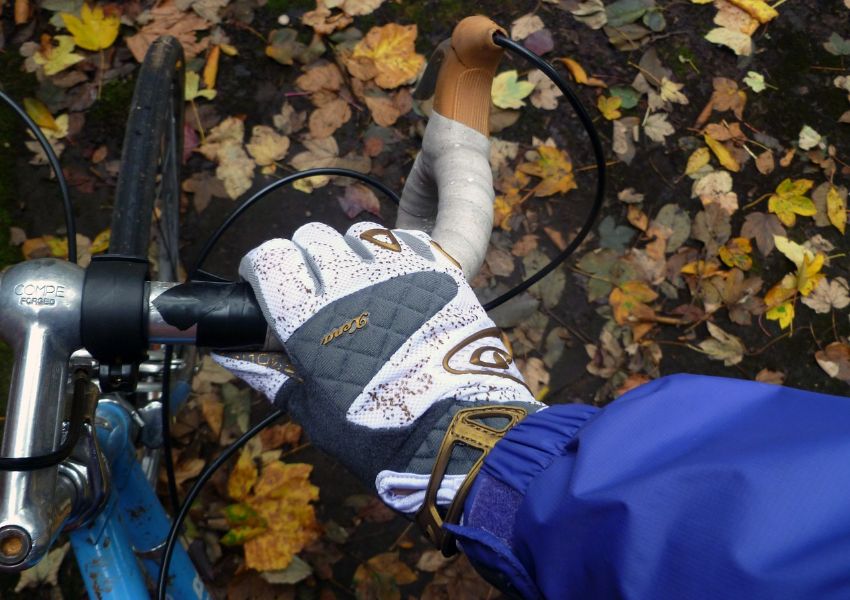
A thin pair of slightly insulated, lightweight full-finger gloves can work great when choosing what to wear for cycling in autumn. They can cover you for most fall weather fluctuations. But if there is a chance for rain, do go for thin waterproof gloves. They will do a much better job of keeping your fingers warm and help prevent heat dissipation if the rain is coupled with cold temps. It’s better to have warm, sweaty fingers than frozen ones. No matter the autumn cycling gloves you choose, they should be slightly elastic and cycling-specific – designed for the unique hand position of holding a handlebar. Some cycling gloves are touchscreen compatible which allows you to operate your phone or GPS on the fly. Do keep this in mind when buying gloves if this is important for you.
To keep your toes from turning blue and to avoid that painful burn when hopping in the shower just after an extremely cold bike ride, it’s best to add shoe covers to your layering. They are especially helpful if the weather takes an unexpected turn for the worse. Depending on the weather, as well as the type of shoes you use (summer/winter model), you can choose between toe covers or full shoe covers.
For those much colder autumn days, it’s best to opt for full shoe covers, referred to as overshoes or booties. These booties cover your whole shoe, and continue up to just above your ankle. Not only do they buy you time before the freezing temps (or rain) hit your toes, but they also keep your shoes clean and tidy. You can get them in both waterproof and non-waterproof versions.
TIP: Overshoes are not only made for road shoes but for MTB shoes as well, which you’ll want to use when visiting offroad paradise spots such as the best autumn MTB destinations and best autumn gravel destinations.
The key to what to wear when cycling in autumn is to layer your clothing. Choose thin, moisture-wicking layers that you can easily take on and off, depending on the weather. By following these simple guidelines above, you’ll be prepared for any weather that comes your way so you can place all focus on thoroughly enjoying the surrounding views of vibrant foliage!
